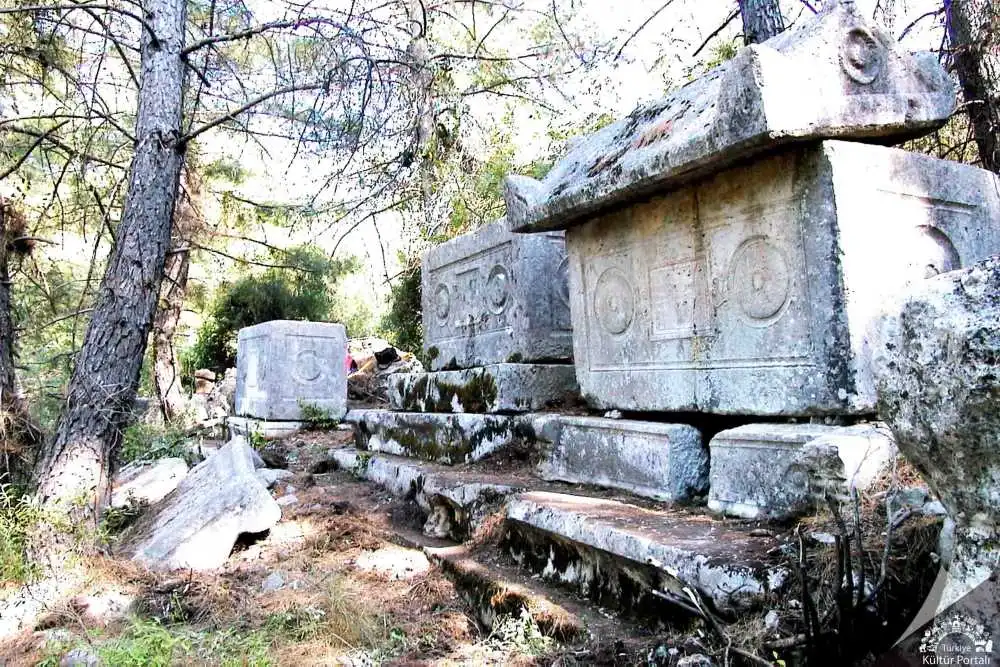Trabenna Ancient City
Description
Located 32 kilometres west of Antalya at the northern foot of Sivridag, the ancient city of Trebenna can be reached via a forest road through the villages of Geyikbayırı and Çağlarca. There is no ancient literature, epigraphic or archaeological data on the existence of Trebenna in the Hellenistic and pre-Hellenistic periods. However, in the Hellenistic period, according to an inscription, Termessos was under the sovereignty of the Ptolemies between 281-280 B.C., and the same sovereignty is expected in the areas where Trebenna is located. It is also possible that the lands of Trebenna were among the lands on the eastern side of the Taurus Mountains captured by Pergamum after the Peace of Apameia (168 BC). Eumenes II (197-160 BC) annexed the western lands of Pamphylia to his kingdom. The 3rd century BC was a period of great splendour for Trebenna.
Emperor Gordian III (238-244 AD), who ascended the Roman throne at the age of 13 and travelled to Asia in 242, granted Trebenna the freedom to mint coins, as did many other Lycian cities. Although Trebenna officially remained within the political boundaries of the province of Lycia during the Roman period, it appears as a Pamphylian city in the Byzantine period. The visible parts of the city walls date from the Byzantine period. There are many rock chambers on the rocks of the acropolis. At first sight you can distinguish between residential and burial chambers. Some of them are first tombs and then dwellings. The most special is the one opposite the entrance to the Acropolis. The Roman buildings are on the plain between the Acropolis and Sivritepe. The Ecclesiasterion, the Sebasteion and the Stoa, with their façades facing south-east and side by side, form the western boundary of the town square, where the Roman public buildings are concentrated, while the Baths, the last public building on the slope of the Elmin necropolis, defines the southern boundary. The entrance to the building is provided by two monumental gates that divide the façade into approximately three equal parts. The acropolis of the Roman city became the place where the settlement retreated during the Byzantine period, surrounded by a protective wall and became the main settlement of the city during the Middle Ages. The city continued to exist as a Byzantine city until the end of the 12th century. It is estimated that Trebenna was abandoned after Attaleia and its surroundings fell to the Turks in the early 1st century AD.
Short Description
Located 32 kilometres west of Antalya at the northern foot of Sivridag, the ancient city of Trebenna can be reached via a forest road through the villages of Geyikbayırı and Çağlarca. There is no ancient literature, epigraphic or archaeological data on the existence of Trebenna in the Hellenistic and pre-Hellenistic periods. However, in the Hellenistic period, according to an inscription, Termessos was under the sovereignty of the Ptolemies between 281-280 B.C., and the same sovereignty is expected in the areas where Trebenna is located. It is also possible that the lands of Trebenna were among the lands on the eastern side of the Taurus Mountains captured by Pergamum after the Peace of Apameia (168 BC). Eumenes II (197-160 BC) annexed the western lands of Pamphylia to his kingdom. The 3rd century BC was a period of great splendour for Trebenna.



